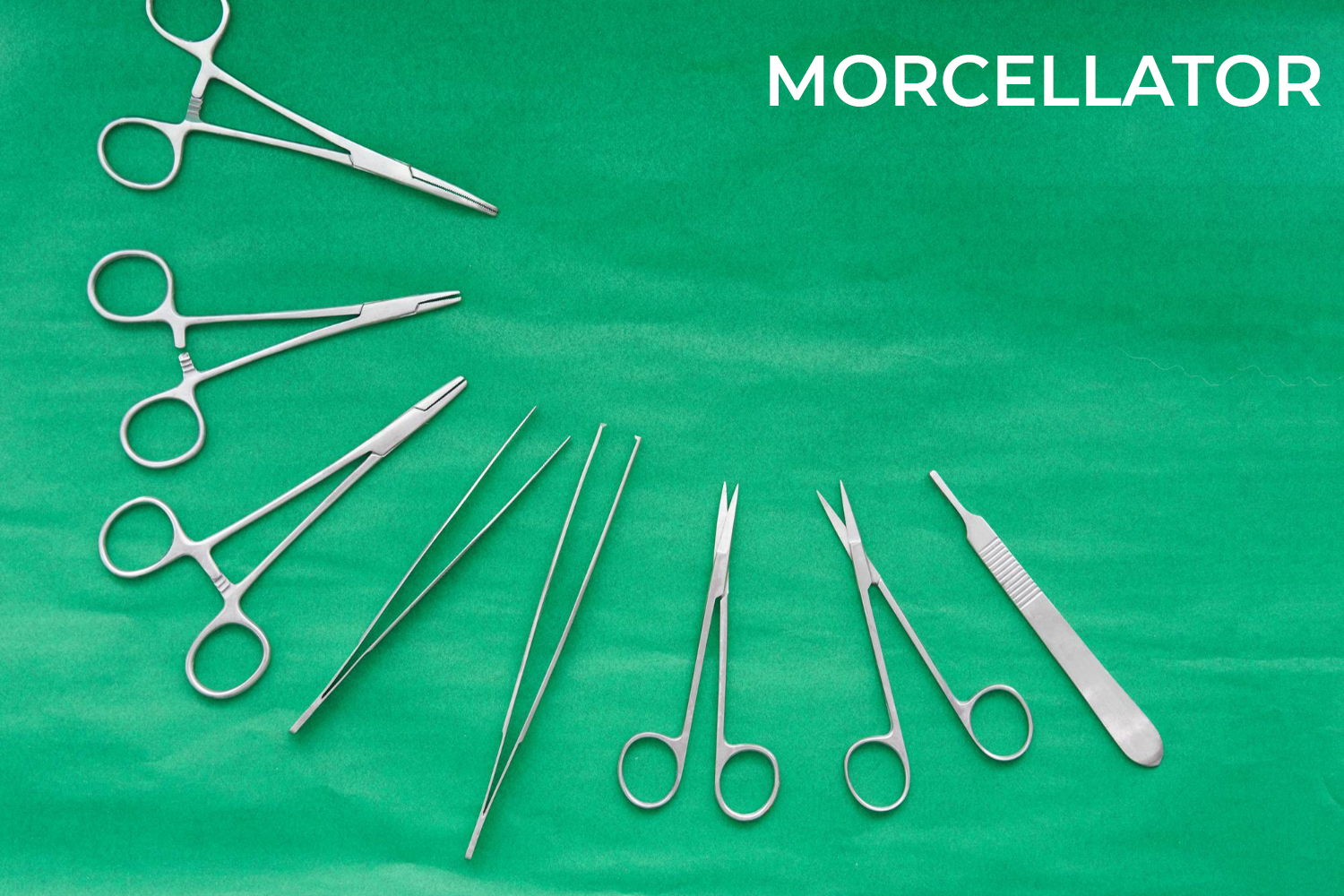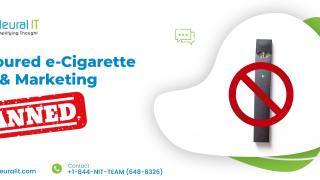Morcellator is a surgical instrument used for division and removal of large masses of tissues during laparoscopic surgery. Laparoscopic morcellation involves the use of powered surgical devices called power morcellators manufactured mainly by Ethicon/Johnson & Johnson. It is a minimally invasive technique which is increasingly used by surgeons these days to take out bulky specimens from the abdomen. This procedure pulls large masses of tissue into a spinning blade, which then cuts the tissue at high velocity into smaller pieces to be more easily removed through laparoscopic incision sites. The Food and Drug Administration (FDA) had approved its use in 1991, which was followed by a series of launches by Ethicon via the 510(k) process.
Power Morcellators were first used for uterine extraction and have since become heavily implemented during laparoscopic gynecological procedures, particularly in minimally invasive myomectomies and robotic supracervical hysterectomy. Surgeons also use the device in nephrectomies and splenectomies, which are surgical procedures to remove the kidney or spleen in both men and women.
Morcellation involves the spreading of cellular material of the morcellated tissue. There is approximately 0.09~0.1% risk of an unexpected leiomyosarcoma in gynecologic surgery for benign pathologies. Considering mortality of leiomyosarcoma, 64% of cases after leiomyosarcoma may develop disseminated disease. Morcellation of the more frequent benign leiomyoma variants may also cause disseminated disease, which while not associated with increased mortality is frequently inoperable and therefore much more difficult to manage than the original disease.
The Food and Drug Administration (FDA) has impeded the use of uterine procedures by issuing a warning that morcellators may spread occult cancer in the course of fibroid removal since April 2014. In the same year, a second warning was also followed in November following which Johnson & Johnson suspended the sale of its morcellators. At least one device maker has threatened legal action against what it calls "unfounded and unproven allegations." In the same statement the FDA discouraged the use of power morcellators in patients seeking hysterectomy (removal of uterus through lower abdomen) and myomectomy (surgery to remove uterine fibroids – also called leiomyomas) procedures, estimating that approximately 1 in 350 such patients is found to have an unsuspected uterine sarcoma, a type of uterine cancer that includes leiomyosarcoma.
The FDA even stated that morcellators can spread uterine cancer, but a recent case where the user died discovered a higher risk of morcellators.
The problem of secondary leiomyosarcoma and parasitic leiomyoma after gynaecological surgeries is not new and such problems have been reported independently of the methods of surgery. The surgery may not be the only or main culprit: the disseminated disease may also be the result of predisposition, reduced paracrine feedback, or metastasis independent of surgery. According to some studies, there was no difference in the overall survival of women with unsuspected uterine malignancy with or without endometrial cancer between laparotomic myomectomy group and laparoscopic myomectomy group.
How Does It Work?
Morcellation is a process when tissues, like the uterus or fibroids, are cut into smaller pieces so that it can be removed easily. The word morcellate means to cut into small pieces. The surgeons make a small invasive incision of fewer than 2 centimeters using the morcellator. After making an incision, the doctors insert the long, tube-like portion of the device into the incision and cut the fibroid or tissue into smaller pieces. The pieces are then vacuumed out and removed in a protective bag.
Types Of Morcellators:
There are two types of morcellation techniques, namely laparoscopic and hysteroscopic.
Laparoscopic Morcellators
- In the laparoscopic procedure, the device is inserted through a small incision in the abdomen. The device then shreds and removes the tissue.
- The shredding process is considered serious as it occurs in an open environment, and pieces of tissue, including cancerous cells, can scatter around the abdominal and pelvic cavities.
- It is also called open morcellation, and the FDA warning applies specifically to this procedure.
Hysteroscopic Morcellators
- The morcellators that fall in this category are designed with tissue traps or collecting pouches. During the procedure, when the tissue grinds up, it is trapped in the pouch for testing.
- The technique is new, and this type of device is not linked to increased cases of cancer.
- The FDA has noted that hysteroscopic morcellators do not pose a similar risk when used in accordance with current indications and instructions.
Product information:
Power Morcellators manufactured mainly by Ethicon.
Gynecare Morcellex
Gynecare X Tract
Morcellex Sigma
Diva by FemRx
Common Side Effects Associated With Power Morcellator Surgery:
Bleeding or infection
Bowel obstruction
Bruising
Fibroid recurrence
Oozing at the incision site
Organ damage
Pain at the incision site
Pelvic and abdominal pain
Muscle soreness
Intra-abdominal abscesses
Intestinal obstruction from new fibroid
Additional surgery
Peritonitis (inflammation of the abdominal lining)
Ethicon was one of the largest manufacturers of Laparoscopic morcellation devices. Following the announcement from FDA in April 2014, J&J withdrew its devices from the market.
Recalled Products:
Gynecare Morcellex Tissue Morcellator
Morcellex Sigma Tissue Morcellator System
Gynecare X-Tract Tissue Morcellator
Serious Alleged Injuries May Include:
- Spread And Upstage Of Undetected Malignant Uterine Tissue
- New Leiomyomas, Including Parasitic Fibroids Endangering A Woman's Fertility And Reproductive Health
- Spread Of Cancerous Cells To Other Areas Of The Body (Metastatic Adenocarcinoma, Peritoneal Sarcomatosis, Peritoneal Ieiomyosarcoma, Ovarian, And Renal)
- Contamination Of Healthy Organs In The Abdominal Cavity Showing Signs Of Inflammation, Infection, And Pain And Bowel Obstruction
- Growth Of Abnormal Masses On Other Organs, Requiring Additional Surgery To Remove
- Death Can Be Resulted From Release Of Spleen Or Kidney Fragments Into The Abdominal Cavity
FDA Safety Warnings:
In April 2014, the FDA discouraged the use of Morcellators for uterine procedures by issuing a warning that Morcellators may spread occult cancer in the course of fibroid removal.
Following this, on July 30, 2014, Johnson & Johnson recalled three laparoscopic power morcellators from hospitals worldwide.
A second warning was announced on November 25, 2014, where the FDA issued an "Immediately in Effect Guidance Document" recommending that manufacturers of these surgical tools add a black box warning to the product's packaging.
The agency estimated that approximately 1 in 350 such patients is found to have an unsuspected uterine sarcoma, a type of uterine cancer that includes leiomyosarcoma and recommended laparoscopic power morcellators not be used in the following cases:
In women with suspected cancer.
In pre or postmenopausal women.
Women, who are candidates for procedures with tissue removed intact, without cutting, through the vagina or a mini-laparotomy incision.
Legal Updates:
Defendants:
Ethicon
Karl Storz
LiNA Medical
Gyrus ACMI
Richard Wolf Medical Instruments,
Blue Endo
Defendant Law Firm:
Ethicon is represented by John Winter of Patterson Belknap Webb & Tyler LLP.
Karl Storz is represented by Ryan Duffy of Wilson Elser Moskowitz Edelman & Dicker LLP.
Allegations: Allegations include that women who underwent hysterectomies and fibroid removals using power morcellators claimed that the device spread uterine cancer.
Plaintiff Steering Committee:
Dr. François Blaudeau - Southern Med Law
Dennis J. Canty - Kaiser Gornick LLP
Carmen Scott - Motley Rice
Meghan Quinlivan - Burg Simpson Eldredge Hersh & Jardine, P.C.,
Anne Andrews - Andrews & Thornton
Andrea Hirsch - The Law Firm of Andrea Hirsch
Avram Blair - Avram Blair & Associates P.C
Rebecca King - Tracey & Fox
Megan McKenzie - Robins Kaplan LLP
Stephanie O'Connor - Douglas & London
Lawrence R. Cohan - Anapol Weiss
Neil Overholtz - Aylstock, Witkin, Kreis & Overholtz, PLLC
Sindhu Daniel - Baron & Budd
Thomas Preuss - Wagstaff & Cartmell, LLP
Yvonne Flaherty - Lockridge Grindal Nauen P.L.L.P.
Elizabeth Graham - Grant & Eisenhofer
Lawsuit Status:
In October 2015, the Judicial Panel on Multidistrict Litigation transferred at least 28 Morcellator lawsuits to the U.S. District Court for the District of Kansas, under MDL No. 2652 (In Re: Ethicon, Inc., Power Morcellator Products Liability Litigation) presided by U.S. Judge Kathryn H. Vratil. The cases in the MDL included those that name Ethicon as a defendant. Lawsuits against other companies were to proceed individually in the district that they are filed.
The cases in the MDL claimed defects in the design of Ethicon, Inc.'s Power Morcellators, which were more likely to result in the dissemination and upstaging of occult cancer or other conditions. Ethicon failed to warn patients adequately of these risks.
In October 2016, with most of the federal cases resolved and only a handful left, the Kansas federal judge presiding over the Ethicon Power Morcellator MDL, on June 30, remanded the remaining cases and recommended that the eight-month-old MDL can be dissolved.
Status Of MDL: Cases Resolved and MDL Dismissed
Important Verdicts & Settlements:
According to a report published by the Wall Street Journal, $100,000 and $1 million were given as settlement by the company, to resolve approximately 100 lawsuits.
In September 2015, LiNA Medical paid $800,000, before the case went to trial.
In 2017, four lawsuits filed in Pennsylvania were settled for an undisclosed amount by the Olympus Corp. of America.
Evidence:
- Usage Of Morcellators During Gynecological Laparoscopic Procedures In Medical Records
- Indications For Surgery And Use Of Morcellator
- Equipment Log During The Operation
- Operative Reports For Initial Surgery
- Biopsy Reports Of Uterine Specimen During Gynecological Procedures
- Follow-Up Complications And Their Treatment After Initial Surgery
Medical Record Review and claim validation of Morcellator case should take approximately 2 hours in most instances; however, this approximation may vary in cases based on the volume of records.





